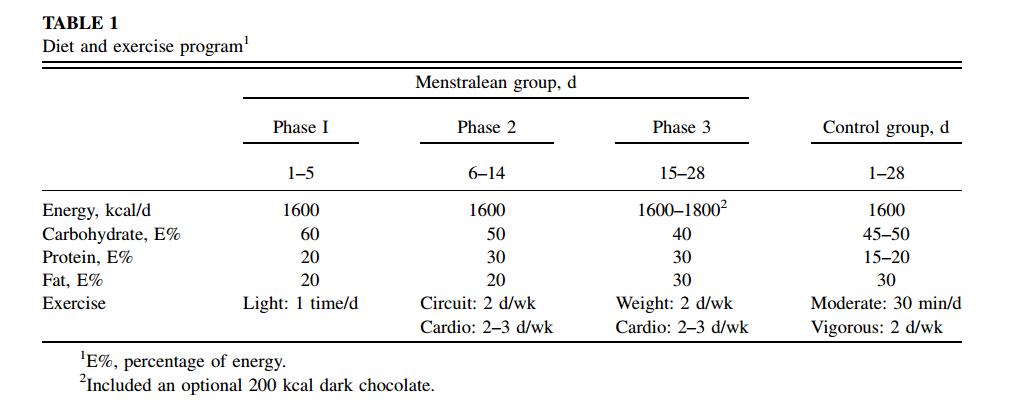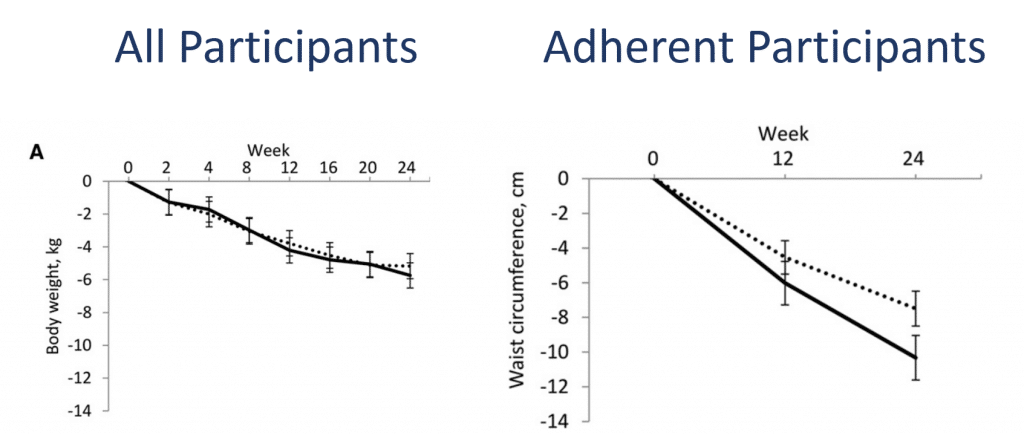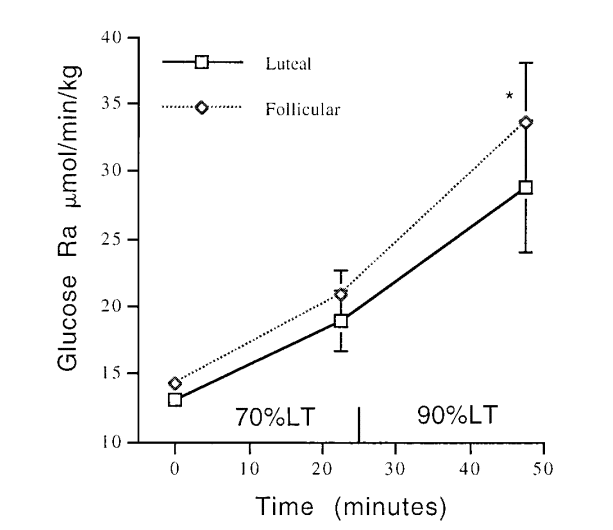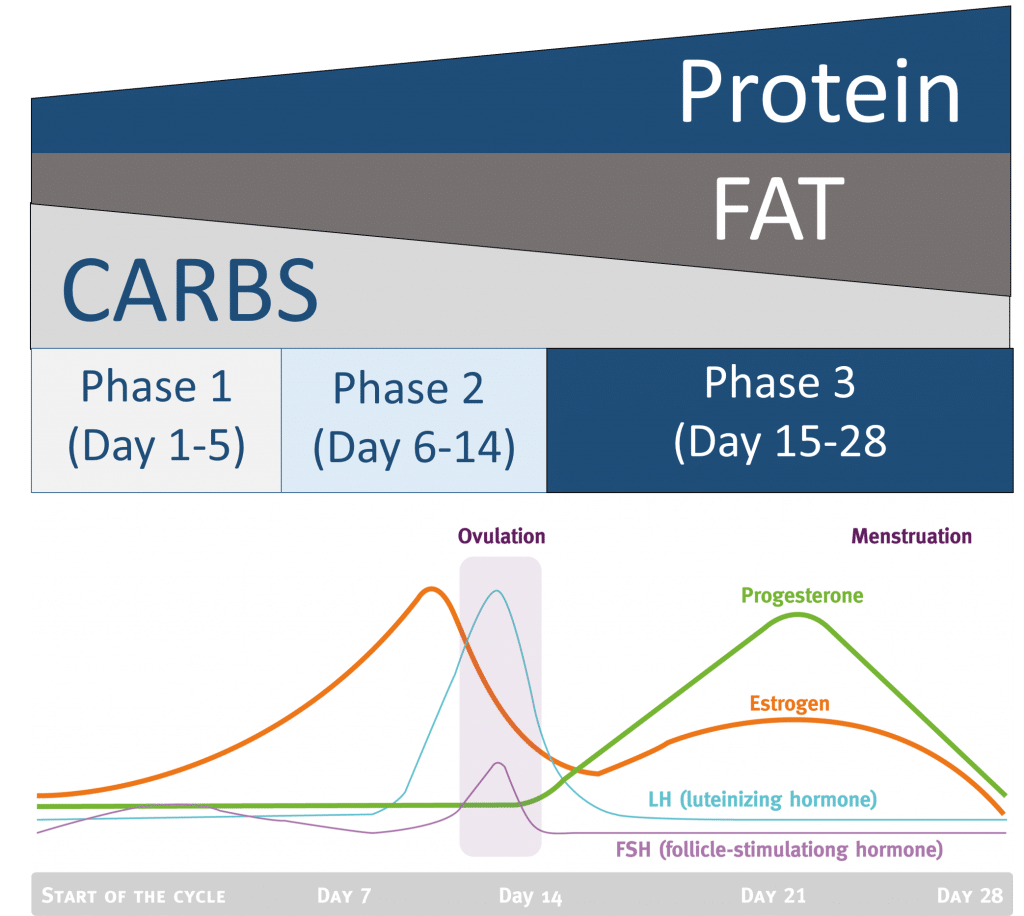It appears that decreasing the amount of carbohydrates and increasing the protein and fat as the female cycle progress can optimize weight loss when dieting. This strategy appears much more effective than normal dieting.
Introduction
Women are incredibly special creatures. I mean that in all the good ways. Their physiology is no exception; it is indeed special. For example, a lot of scientific studies (including nutrition ones) exclude women participants due to the effect the menstrual cycle has on metabolism. It can confound the data and add a lot of noise to it as well.
One thing we have gleaned over the years is that during the luteal phase of the cycle women tend to utilized carbohydrates less and fat more. This means that when trying to lose weight it may be pertinent to match women’s metabolism to their nutrient intake. A group of researchers did just that. The study itself and the results are rather interesting. Also, if you ask me the results are rather compelling.
The study we are going to discuss is, “A weight-loss program adapted to the menstrual cycle increases weight loss in healthy, overweight, premenopausal women: a 6-mo randomized controlled trial” by Geiker and colleagues from the American Journal of Clinical Nutrition.
Enough with the introduction, why don’t we just dive right in!
Subjects
The researchers in this study recruited 60 overweight-obese women who were otherwise healthy, not on hormonal contraceptives, and who could engage in cardio style exercise.
The Diet
The study was divided into two groups. The Menstralean Diet group and a Control Diet group. The Menstralean Diet was synchronized to match the menstrual cycle “(i.e., a 28-d dietary plan that was separated into 3 phases that corresponded to the following 3 menstrual phases: menstruation (phase 1, days 1–5), the follicular phase (phase 2, days 6–14), and the luteal phase (phase 3, days 15–28)”.
The macronutrient composition of the Menstralean diet was aligned to match each of the 3 phases of the menstrual cycle (see Table 1 from the study below). Here is a funny note from the paper, “Furthermore, a portion of dark chocolate was allowed to be consumed on days 24–28, thereby increasing the daily caloric limit to 1800 kcal, also with the aim of satisfying cravings”.
The Control Diet group was instructed to follow a program that was based on the Danish educational, unit-based diet system Kostkalender (The Diet Calendar). The macronutrient composition of the control diet was persistent throughout the period (Table 1). Compliance with the program was evaluated at dietary sessions at weeks 4 and 8. Compliance <80% was an exclusion criterion.

Exercise
Both groups exercised with minor differences between the two but the overall differences would not likely be responsible for the substantial differences in weight loss seen in this study (we will discuss this more below)
Analysis
Now the analysis in this study was kind of fancy and interesting but for our purposes the important data was analyzed using the entire sample and then in a subpopulation of those that adhered all the way through the study.
Weight loss Results
This figure tells you everything you need to know. When the authors included all the subjects, regardless of adherence rates, both groups lost quite a bit of weight, yet there appeared to be no difference between diets. When you looked at the individuals with complete adherence you see a much different result; matching nutrition to the changes in substrate utilization that occur during the menstrual cycle led to a 4.3 kg (~9.5 lb) greater weight loss .

Digging Deeper
Essentially, this study gives credence to the notion of “nutrient periodization” for women who are aiming for weight loss. When you map the appropriate nutrients onto the changing physiology of women it appears you can get better weight loss results than just a standard, same old thing day in day out approach.
The exercise piece of this study is also important and something to also consider. It is reasonable to hypothesize that, in addition to nutrition, there may be benefit to periodizing training around the female cycle. Dr. Brent Ruby was the senior author on a study demonstrating that carbohydrate utilization is decreased and fat oxidation is increased during exercise when women are in the luteal phase of their cycle (1).

This data maps on directly to the “nutrient partitioning” observed in this study where carbohydrates were decreased during the luteal phase of the cycle. There are several considerations to make when observing these data. One being that scheduling peak performance training around the luteal phase may not be optimal as the body has a lower ability to utilize carbohydrate, the main fuel for high level work. In line with that reasoning is lower intensity and higher volume work may be easier to do and more appropriate during the luteal phase. Has this idea been fully borne out in the research? No. Is it a plausible idea that merits investigation and testing? Absolutely
Taking all this data, and data from the body of research as a whole, there are clear differences in female and male physioligy and accounting for the hormonal changes in the female cycle is probably a good idea when trying to optimize performance and weight loss. Based on the data in this study and other studies here is a way to conceptualize the idea of nutrition periodization for weight loss during the female cycle.


